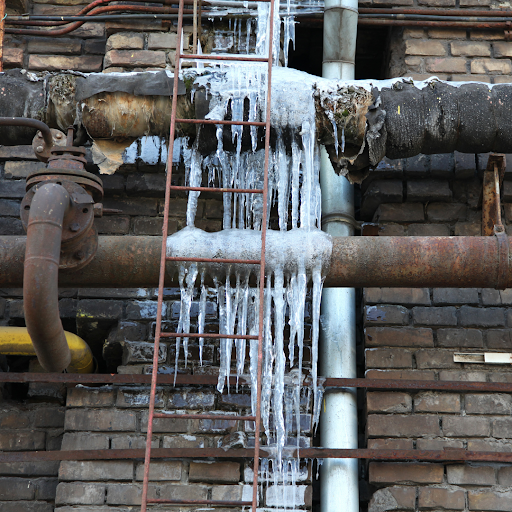Here further down you will discover additional incredibly good data with regards to Preventing and dealing with frozen pipes.

Cold weather can wreak havoc on your pipes, specifically by freezing pipes. Below's just how to avoid it from happening and what to do if it does.
Intro
As temperature levels decrease, the risk of frozen pipelines boosts, potentially causing pricey repairs and water damages. Understanding exactly how to prevent frozen pipelines is critical for property owners in chilly environments.
Recognizing Icy Pipes
What causes pipes to freeze?
Pipes freeze when revealed to temperatures listed below 32 ° F (0 ° C) for extended durations. As water inside the pipes ices up, it increases, taxing the pipeline wall surfaces and potentially triggering them to break.
Risks and damages
Frozen pipes can result in supply of water disruptions, residential property damages, and costly repair services. Burst pipes can flooding homes and trigger substantial architectural damages.
Indicators of Frozen Water Lines
Recognizing icy pipelines early can prevent them from bursting.
Exactly how to determine icy pipelines
Seek decreased water circulation from taps, uncommon odors or noises from pipes, and noticeable frost on revealed pipelines.
Prevention Tips
Protecting at risk pipelines
Cover pipes in insulation sleeves or use heat tape to safeguard them from freezing temperatures. Concentrate on pipelines in unheated or external locations of the home.
Home heating methods
Keep indoor rooms sufficiently heated up, particularly areas with pipes. Open cupboard doors to permit cozy air to flow around pipes under sinks.
Securing Outdoor Plumbing
Garden hoses and outside faucets
Detach and drain garden tubes before winter months. Install frost-proof faucets or cover outdoor taps with shielded caps.
What to Do If Your Pipelines Freeze
Immediate activities to take
If you believe icy pipes, maintain taps available to alleviate pressure as the ice thaws. Utilize a hairdryer or towels taken in hot water to thaw pipelines slowly.
Long-Term Solutions
Architectural changes
Think about rerouting pipes away from outside walls or unheated areas. Add extra insulation to attics, basements, and crawl spaces.
Upgrading insulation
Purchase high-quality insulation for pipes, attic rooms, and walls. Appropriate insulation aids maintain constant temperature levels and reduces the danger of icy pipelines.
Conclusion
Stopping icy pipelines needs aggressive measures and quick responses. By comprehending the causes, indications, and preventive measures, house owners can shield their pipes during cold weather.
5 Ways to Prevent Frozen Pipes
Drain Outdoor Faucets and Disconnect Hoses
First, close the shut-off valve that controls the flow of water in the pipe to your outdoor faucet. Then, head outside to disconnect and drain your hose and open the outdoor faucet to allow the water to completely drain out of the line. Turn off the faucet when done. Finally, head back to the shut-off valve and drain the remaining water inside the pipe into a bucket or container. Additionally, if you have a home irrigation system, you should consider hiring an expert to clear the system of water each year.
Insulate Pipes
One of the best and most cost-effective methods for preventing frozen water pipes is to wrap your pipes with insulation. This is especially important for areas in your home that aren’t exposed to heat, such as an attic. We suggest using foam sleeves, which can typically be found at your local hardware store.
Keep Heat Running at 65
Your pipes are located inside your walls, and the temperature there is much colder than the rest of the house. To prevent your pipes from freezing, The Insurance Information Institute suggests that you keep your home heated to at least 65 degrees, even when traveling. You may want to invest in smart devices that can keep an eye on the temperature in your home while you’re away.
Leave Water Dripping
Moving water — even a small trickle — can prevent ice from forming inside your pipes. When freezing temps are imminent, start a drip of water from all faucets that serve exposed pipes. Leaving a few faucets running will also help relieve pressure inside the pipes and help prevent a rupture if the water inside freezes.
Open Cupboard Doors
Warm your kitchen and bathroom pipes by opening cupboards and vanities. You should also leave your interior doors ajar to help warm air circulate evenly throughout your home.

Do you like reading up on Helpful Tips to Prevent Frozen Pipes this Winter? Make a short review further down. We'd be happy to know your suggestions about this write up. We hope that you come back again in the near future. Are you aware of somebody else who is serious about the subject? Do not hesitate to share it. Thanks a lot for going through it.
Contact Us Today
Comments on “Protecting Against Frozen Plumbing: Effective Methods for Winter”